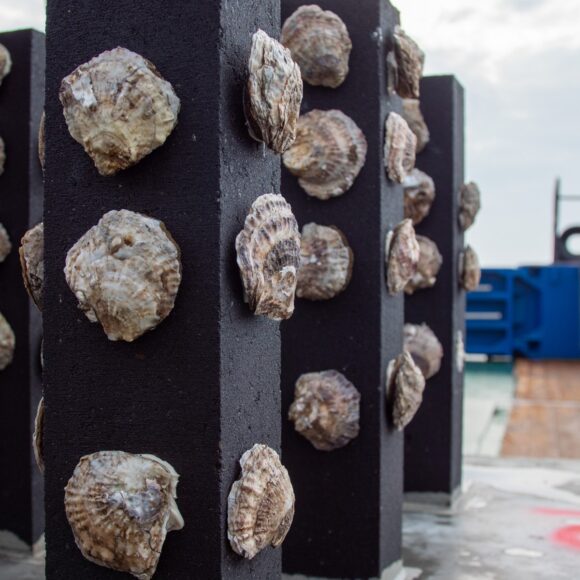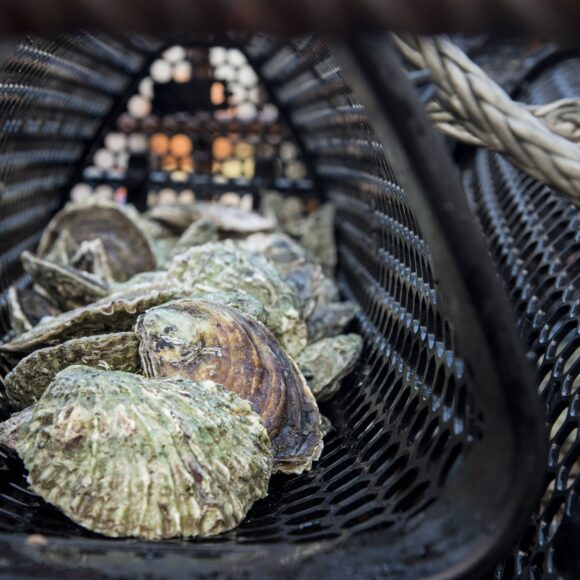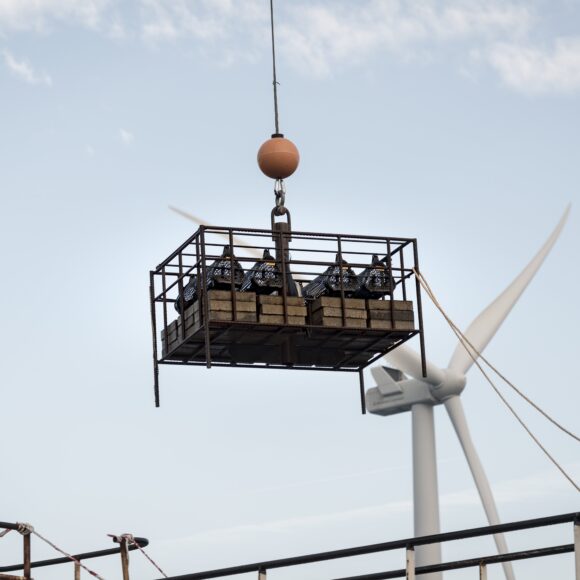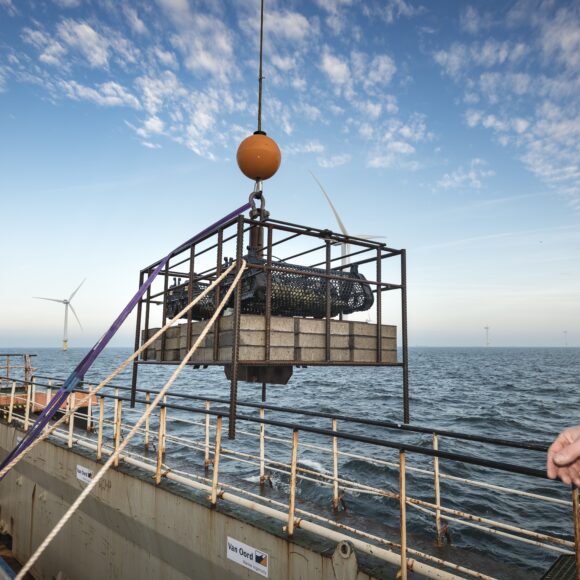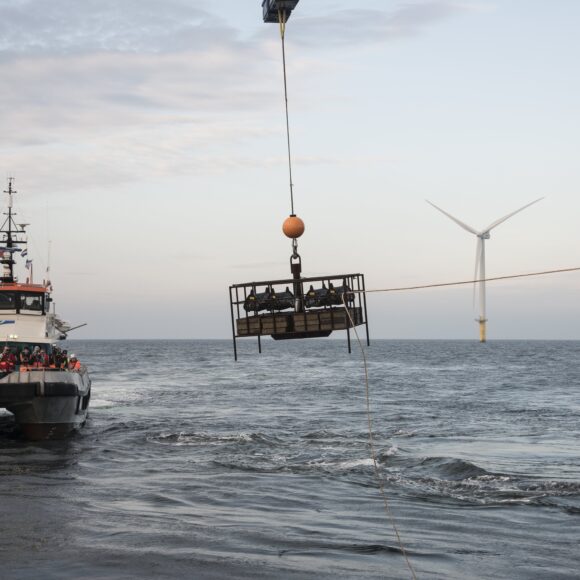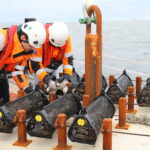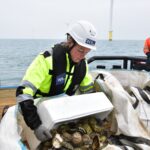Oyster Broodstock Structures in Eneco Luchterduinen offshore wind farm
Objectives
To test several outplacement methods and identify key success factors for enhancing marine ecosystems within offshore wind farms through the restoration of European flat oysters.
Short description
In 2018, The Rich North Sea, in collaboration with Eneco and Van Oord, lauched a pilot project at the Eneco Luchterduinen Offshore Wind Farm The Eneco Luchterduinen offshore wind farm is 23 kilometers off the coast at Noordwijk aan Zee. The offshore wind farm has been in operation since 2015. The 43 wind turbines generate renewable energy equivalent to the annual consumption of 150,000 households. to test several outplacement methods focused on the European flat oyster. This included the use of oyster cages and the placement of live oysters loosely placed on the scour protection.
In 2019, the pilot project was monitored and the results revealed that although some of the racks had sunk into the sand, burying the oysters, many remained intact, with around 80% of the oysters surviving and showing growth. These encouraging results suggested that, given the right conditions, oysters could thrive in offshore wind farms. However, the findings also indicated that the design of the cages was a critical factor in oyster survival and needed to be adjusted.
In 2022, based on lessons learned, a newer and more stable oyster broodstock structure design was installed in the offshore wind farm. Each structure consisted of a concrete table with 16 vertical columns and 250 oysters securely attached. Four structures were placed on the scour protection layer of four wind turbines at Luchterduinen. The project aimed to test the performance of this design on the layer around the monopiles, which could potentially offer more stability, reduce sediment coverage, enhance oyster survival and reproduction, and facilitate easier placement and maintenance.
Innovative ecological monitoring techniques, including eDNA and underwater footage, have been employed. In 2024, the first monitoring mission using ROV (remotely operated vehicle) technology was conducted. The results confirmed that the broodstock structures remained in place but were heavily overgrown, which hindered visibility and made it difficult to assess the number of oysters and their condition. Despite the overgrowth, the structures showed minimal sediment coverage, remained stable, and were still visible during monitoring.
Learn more
1 + 2 + 3 + 4 (a) + 5
Information updated on: 22 August 2025
